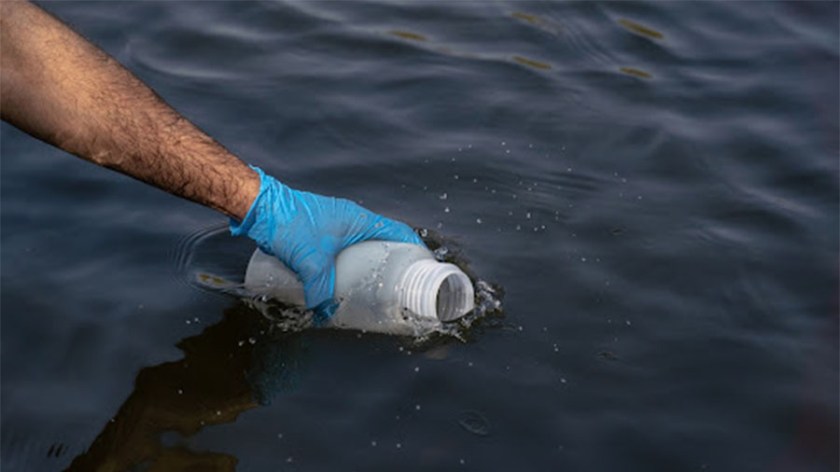Biologists at Eawag have identified ten species of whitefish in the lakes of the Reuss river system. Of these, seven have been described as distinct species for the first time – although in two cases this required inspection of specimens from historical collections, since eutrophication of lakes in the 20th century also led to the extinction of fish species in Central Switzerland.

The “Edelfisch” (Coregonus nobilis) was, after the smaller “Albeli”, the second most commonly caught species of whitefish in Lake Lucerne until, in the second half of the 20th century, phosphate from domestic wastewater and nutrient-rich run-off from farmland led to a massive increase in algal blooms. Compared to the lakes of the Central Plateau, nutrient levels in Lake Lucerne were moderate, and eutrophication was short-lived; even so, due to algal decomposition, oxygen was depleted in the deeper layers of the lake. The “Edelfisch”, which reproduces in the late summer at a spawning depth of 80 metres or more, suffered as a result. Shortly before nutrient inputs decreased following the ban on phosphates in detergents and the expansion of wastewater treatment plants, stocks of this species collapsed and it was considered to be extinct in 1980. Only from the late 1990s were individual specimens caught once again, unequivocally identified as C. nobilis in 2000 by the whitefish specialist and Eawag researcher Rudolf Müller.

Five whitefish species in Lake Lucerne
As the “Edelfisch” is now a protected species, Lake Lucerne has not lost any of its historically recorded whitefish species. Indeed, in addition to the familiar “Edelfisch”, “Albeli” and “Bodenbalchen”, Eawag scientists have identified two new species – two large whitefish, differing from the previously known species in their habits, morphological characteristics and genetic composition. The pelagic “Schwebbalchen” (Coregonus suspensus) probably lives permanently in the open water, not only for foraging but also for reproduction – a spawning behaviour only previously observed in the “Blaufelchen” (C. wartmanni) of Lake Constance. Occupying a position intermediate to the pelagic “Schwebbalchen” (C. suspensus) and the “Bodenbalchen” (C. litoralis) is the littoral “Schwebbalchen” (C. intermundia).
Lake Zug survivor

Particularly affected by eutrophication in the mid-20th century were whitefish in Lake Zug, which – like other Central Plateau lakes – was exposed to higher nutrient levels, for a longer period, than waterbodies further upstream. As only the uppermost water layers of this 200-metre-deep lake maintained oxygen levels sufficient to support fish, two whitefish species spawning in the depths of the lake died out – the (Lake Zug) “Albeli” (C. zugensis) and “Albock” (C. obliterus). Indeed, the Lake Zug “Albock” would have been completely forgotten if specimens had not been found by Eawag scientists Oliver Selz and Ole Seehausen in the historical Steinmann-Eawag Collection. Its morphology and historical accounts indicate that the Lake Zug “Albock” was a deep‑water specialist – a specialisation only otherwise observed to the same degree in the (likewise extinct) Lake Constance Kilch (C. gutturosus) and the (still extant) Lake Thun Kropfer (C. profundus).
The only whitefish species still found in Lake Zug today, spawning near the shore, is the “Balchen”. Testifying to its survival is its new scientific name – Coregonus supersum (“I have survived”).
Species endemic to each lake


Also new are the scientific names of the Lake Lucerne “Bodenbalchen” (C. litoralis) and “Albeli” (C. muelleri). For the morphological and genetic studies carried out by Oliver Selz and Ole Seehausen in order to revise the taxonomy of whitefish showed that almost every lake in Central Switzerland has its own species of “Albeli” and “Bodenbalchen”.
Previously, the “Albeli” of Lakes Zug and Lucerne had been classified as members of the same species (C. zugensis), while the “Balchen” spawning near the shore of the various Central Swiss lakes were known as C. suidteri. These collective species names have now been inherited by the extinct Lake Zug “Albeli” (C. zugensis) and the Lake Sempach “Balchen” (C. suidteri).
The Lake Lucerne “Albeli” received the new name C. muelleri in honour of the fisheries biologist and whitefish specialist Dr Rudolf Müller (1944–2023).

A reflection of Switzerland
The lakes of the Reuss river system are a reflection of Switzerland as a whole. Since the last ice age, at least 35 whitefish species evolved in the pre-alpine lakes, usually two or more in each lake. Switzerland lost a third of these species during the period of lake eutrophication around the middle of the 20th century. Many of the lost species are known to researchers only thanks to historical collections, such as that created before the eutrophication period by the naturalist Paul Steinmann and currently curated by the Natural History Museum of Bern.
Original source:
Selz OM, Seehausen O (2023) A taxonomic revision of ten whitefish species from the lakes Lucerne, Sarnen, Sempach and Zug, Switzerland, with descriptions of seven new species (Teleostei, Coregonidae). ZooKeys 1144: 95-169. https://doi.org/10.3897/zookeys.1144.67747








